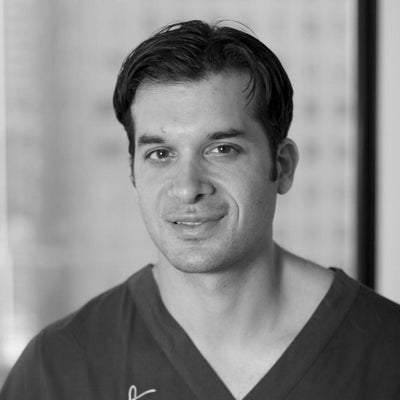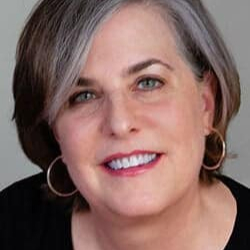A revision rhinoplasty is a surgical procedure that aims to correct undesired results or complications that arise after a previous rhinoplasty procedure (commonly called a nose job).
People seek revisions for a range of reasons, including:
- a tip that’s pinched, drooping, or too upturned
- a residual hump on the bridge of the nose
- a bridge that is overly scooped
- a crooked nose
- a collapsed nasal bridge (saddle nose deformity)
- excess fullness in the supratip area of the nose (pollybeak deformity)
- poor healing and/or excess scar tissue from a previous surgery
- nostril irregularities or asymmetries
- a hanging columella
- a nose that’s left too short, long, wide, or narrow
- valve collapse or other breathing problems
In most cases, the goal is to resolve nasal deformities left by a primary rhinoplasty by rebuilding the nasal tip or bridge of the nose. Surgery can also address breathing difficulties and nasal function by opening an obstructed nasal airway and reversing valve collapse, which typically requires cartilage grafts.
A second rhinoplasty is a relatively common plastic surgery procedure. According to a 2021 study, up to 15% of rhinoplasty surgeries are later revised, even if they were originally performed by an experienced, board-certified facial plastic surgeon or plastic surgeon.
Revision surgery is always more complex than the initial procedure because of scar tissue, the unpredictability of secondary-scar healing, and potentially missing anatomical structure. Because revision surgeons work with altered tissues, they’re careful to set realistic expectations and emphasize that the goal of a revision rhinoplasty is improvement, not perfection.
At a revision rhinoplasty consultation, your surgeon should discuss the risks and outline realistic expectations for the kind of results they can achieve. Some use computer imaging, to help ensure they’re on the same page with a prospective patient about the desired result.
“Communication with your revision surgeon is critical to understand what you don’t like and what is even possible. Even the most skilled hands in the world cannot make a perfect nose,” says board-certified facial plastic surgeon Dr. Anil Shah, who practices in Chicago.
They will also likely recommend giving your nose a year after your original surgery to fully heal before considering a revision rhinoplasty procedure.
RealSelf Tip: Consider returning to your original surgeon for a rhinoplasty revision, “assuming they’re capable of performing the surgery, which is usually more difficult than the original surgery,” says Dr. George Toledo, a board-certified plastic surgeon in Dallas. “I revise my patients for free—with a small surgical facility and anesthesia fee, if needed.” However, if you have any doubts about their ability to correct your concerns, it's well worth finding a revision rhinoplasty specialist.
Pros
- Revision surgery can improve your nasal appearance or resolve functional issues like breathing problems.
- It's an outpatient procedure, and recovery isn't too painful.
- A good result from a secondary procedure can create more balance in your facial features, relieve appearance-related anxiety, and boost self-confidence.
- Any scarring will fade and should become difficult to detect.
Cons
- Revision rhinoplasty is widely known as one of the most technically challenging facial plastic surgery procedures, requiring meticulous surgical techniques and a keen eye. “There are circumstances where revision rhinoplasty can actually cause more damage than good, so it’s important to seek a skilled, board-certified plastic surgeon who’s able to identify what’s best for you,” says Dr. Barry Weintraub, a board-certified plastic surgeon in New York City.
- You’ll need up to 10 days of downtime after this nose surgery, due to bruising and swelling.
- It takes at least a year for all the swelling to resolve so you can see your final result.
- The outcome may not live up to your expectations.
- Because it’s so challenging, rhinoplasty revision surgery typically costs more than the previous surgery—especially if you don't want to return to your primary surgeon or they don't offer a price break on revisions.
RealSelf Tip: A 2021 article published in Aesthetic Plastic Surgery reported that approximately a third of all candidates for rhinoplasty surgery were diagnosed with body dysmorphic disorder (BDD). It also noted that these patients “commonly have high expectations regarding the surgical outcome and are often not satisfied postoperatively.”
Your surgeon may look for signs of BDD, to help assess whether you’re a good candidate for a secondary procedure. If they believe you have severe BDD, they may decline you as a patient and refer you for counseling.
- Average Cost:
- $16,576
- Range:
- $6,200 - $31,357
If your rhinoplasty revision involves just a minor tweak, it may cost less than the original procedure—if it’s performed by your original surgeon. Some surgeons even offer their primary rhinoplasty patients “free” revision surgery, with a small fee for the surgical facility and anesthesia.
If the nose has multiple major issues, such as prominent deviation and drooping nasal tip, it will likely require nasal reconstruction surgery, according to Dr. Shah. Nasal reconstruction costs substantially more than a primary rhinoplasty, due to the time and technical difficulty involved. In this case, it’s wise to find the best revision rhinoplasty surgeon you can afford, to help avoid the possibility of another (more complicated and costly) revision procedure in the future.
Most revision rhinoplasties are considered cosmetic surgery and not covered by insurance. But if the airway is compromised because of valve collapse or a deviated septum, your insurance may cover a portion of the cost.
That said, not all revision rhinoplasty surgeons accept insurance. “Because revision rhinoplasties are so difficult to perform and often the insurance reimbursement is minimal, many top, experienced surgeons will not accept insurance,” says Dr. Toledo. Even if they do, you may find that you'll have significant out-of-pocket costs.
However, most plastic surgeons do offer payment plans or accept third-party financing options, such as CareCredit.
The revision rhinoplasty photos in our gallery have been shared by the provider who performed the procedure, with the patient's consent.
Facial plastic surgeons recommend waiting at least a year for swelling to go down and minor asymmetries to improve before considering a revision.
“Some of the biggest disasters I’ve seen in revision rhinoplasty consultations have come after revision surgery was attempted too soon,” says Dr. Steven Pearlman, a board-certified facial plastic surgeon in New York City.
That said, many doctors on RealSelf say that they’ve performed revisions earlier on good candidates, in special situations.
While you’re waiting, think twice before being tempted to have a “liquid” or nonsurgical rhinoplasty with dermal filler as a short-term fix. “Nonsurgical rhinoplasty will distort the normal anatomy for your revision surgeon,” says Dr. William Portuese, a board-certified facial plastic surgeon in Seattle. “In addition, nonsurgical rhinoplasty is not FDA-approved, and it can have significant complications.”
This delicate procedure is usually performed under general anesthesia, with the patient fully asleep. It can take between 90 minutes and five hours, depending on the complexity of your situation and surgeon’s technique.
Most rhinoplasty surgeons use the open approach, which allows better visibility to assess the state of the nasal tissue and easier access to reconstruct your nose. Here’s how that works:
- After making a small incision in the columella between the nostrils and additional incisions inside the base of the nostrils, your surgeon will separate the skin from the cartilage and bone.
- Then they'll reshape your nose. This may require cutting and repositioning bone (commonly referred to as “breaking the nose”) or removing bone and cartilage—though most likely, cartilage grafts will need to be added, to better support your new nose.
- The new cartilage is often taken from the nasal septum, ear, or rib. “Revision rhinoplasty is often a delicate balance between subtracting excess tissues and adding to tissues which may have been overly removed in the first surgery,” explains Dr. Shah.
- Once the underlying structure of your nose is refined, the skin is gently re-draped, the nasal tip is carefully aligned, and the tissue is affixed with tiny sutures.
You’ll head home as soon as you recover from the anesthesia. Make sure you have someone you trust there to make sure you get home safely.
In most cases, revision rhinoplasty surgeons prefer to open the nose so they can clearly see how the anatomy was altered during a previous surgery. This is especially true when the surgeon performing the revision rhino did not perform the primary surgery.
That said, the less-invasive closed rhinoplasty (endonasal) technique can be used for less complicated cases of corrective nasal surgery. You’ll find out at your initial consultation if this option would work in your situation.
Many surgeons perform closed revision nose jobs for even minor touch-ups under general anesthesia, to ensure that patients remain comfortable. “There are lots of nerve endings in the nose,” says Dr. Portuese. However, Dr. Shah notes that smaller “tweaks” like nostril adjustments or nasal hump reduction can be performed comfortably under local anesthesia.
Healing after nasal reconstructive surgery does take longer in most cases—especially if the procedure was done via an open approach.
“Revision rhinoplasty healing time is longer because the scar tissue from the initial rhinoplasty slows the resolution of surgical swelling. If the changes are minimal, then swelling may resolve more quickly—but if a moderate or extensive amount of work is required, then a longer healing time should be anticipated,” says Dr. Thomas Kaniff, a board-certified facial plastic surgeon in Sacramento, California.
Barring prolonged swelling, a longer recovery isn’t necessarily a tougher recovery. In fact, revision rhinoplasty recovery is similar to what you've experienced after a primary rhinoplasty.
- Bruising, swelling, and discomfort or a feeling of stuffiness are common, especially during the first two weeks post-op.
- Initially, your nose will be supported with a splint and bandages, to keep the nasal structures properly aligned. During the first week post-op, this dressing must be kept in place.
- Most patients can return to work 7 to 10 days after a secondary rhinoplasty, but it’s important to avoid situations where your nose can be hit or jostled.
- You'll have follow-up appointments so your surgeon can assess how your healing is progressing.
“Nasal bones take about two weeks to start gelling in place after surgery, but they’re not at their strongest for two to three months after surgery,” says Dr. Manish Shah, a plastic surgeon in Denver.
Every surgeon has different aftercare instructions and restrictions. Follow your surgeon’s post-op guidelines to a tee to prevent complications and speed healing.
Related: 8 Rhinoplasty Recovery Rules You Should Always Follow After Surgery
Before you see your final results, you’ll need to pass a few key milestones on your revision rhinoplasty recovery journey:
- Within three to four months, most of the swelling in the upper third of your nose will have gone down, so you’ll have a reasonably good idea of your new nose's size and shape.
- Within six to eight months, 90% of swelling will have resolved.
- Within one to three years, swelling will fully resolve and nasal tissues will settle into place, so that the final result of your revision nose surgery is fully evident.
Once you’ve completely healed, your results should be permanent, aside from the changes that naturally come with aging.
Related: What Should You Do If You Don't See the Results You Wanted?


